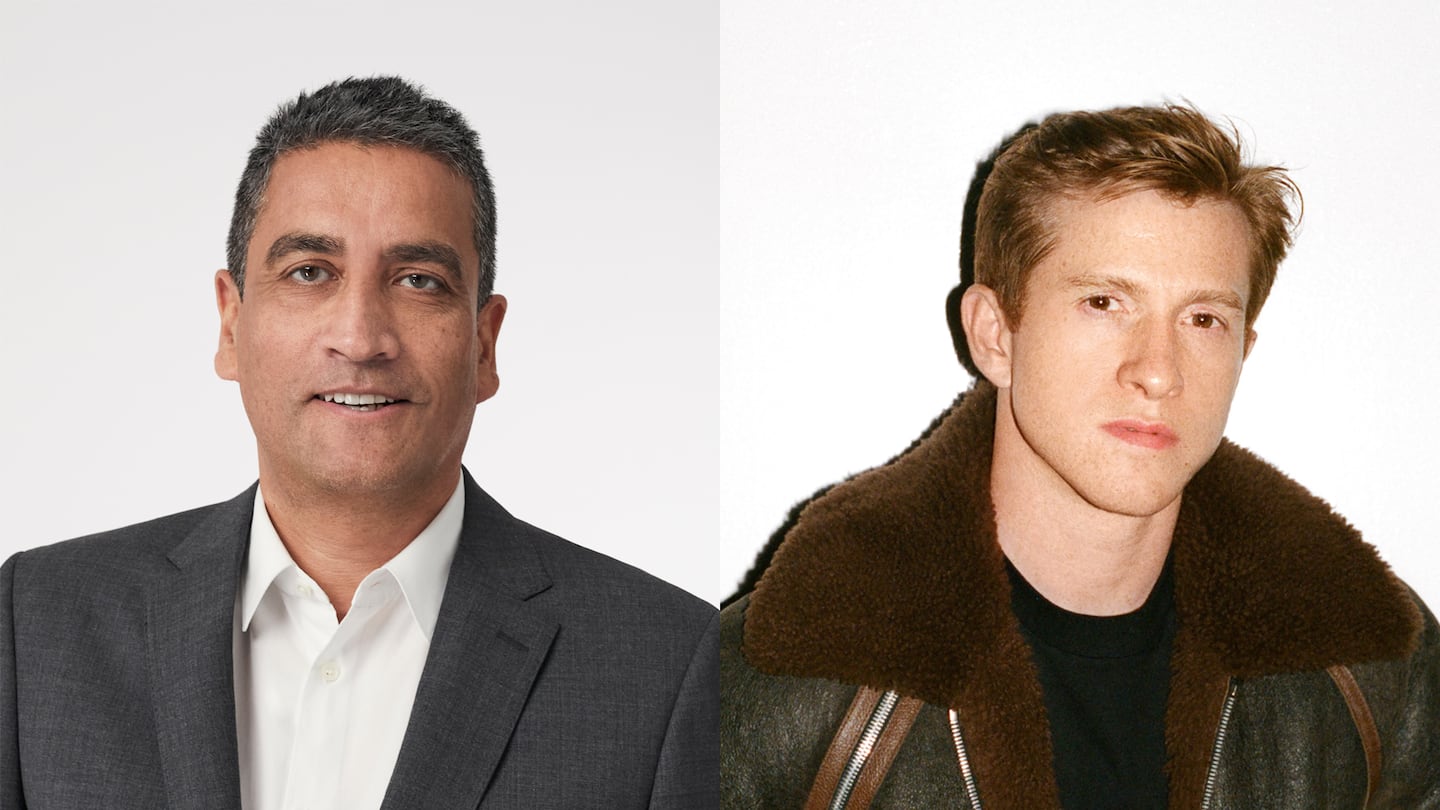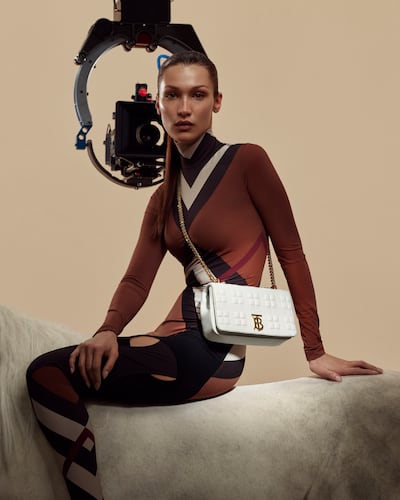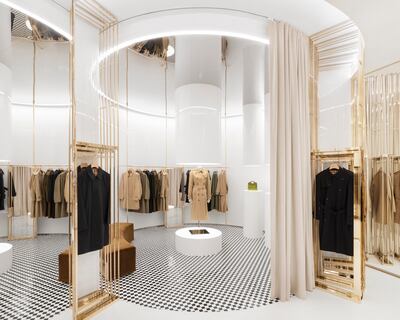
The Business of Fashion
Agenda-setting intelligence, analysis and advice for the global fashion community.

Agenda-setting intelligence, analysis and advice for the global fashion community.

LONDON — Under the leadership of two Brits — chief executive Jonathan Akeroyd and designer Daniel Lee — Burberry hopes to accelerate sales by boosting accessories and leaning into the brand’s British identity, growing annual revenues to £4 billion ($4.75 billion) mid-term.
In a presentation at the brand’s headquarters Thursday, CEO Akeroyd laid out his much-anticipated plan for the heritage house, which will include introducing fresh, more relatable products and clarifying the brand’s message, more clearly articulating its unique British positioning, to build on the strategy of brand elevation undertaken by his predecessor, Marco Gobbetti.
Akeroyd joined Burberry in April, tasked with fuelling growth after revenues continued to stagnate during a years-long plan to move the brand upmarket. While Burberry made progress adopting a more modern, luxurious identity and investing in its burgeoning leather-goods business, the brand struggled to deliver top-line growth during a period when rivals like LVMH, Kering and Hermès soared.
Pivotal to revitalising sales will be Lee, the 36-year-old West Yorkshire native named to succeed former design chief Riccardo Tisci last month. The house is betting that Lee, best known for reinvigorating Kering-owed Bottega Veneta, will refresh Burberry’s offer by leveraging his knack for creating upscale accessories that are both fashion-forward and commercial.
ADVERTISEMENT
“The next phase is about realising our potential as the modern British luxury brand,” Akeroyd said. “We have an opportunity to really harness the power of the brand, which will drive growth.”
The next phase is about realising our potential as the modern British luxury brand.
Burberry announced its new strategy while reporting first-half financial results. Sales rose 5 percent year-on-year excluding currency shifts, to £1.3 billion, slightly above analyst expectations. Adjusted operating profit rose 6 percent to £238 million.
Akeroyd wants to grow annual sales from £2.8 billion to £5 billion, hitting the £4 billion mark within three to five years, roughly in line with the brand’s pre-existing target for achieving high-single-digit annual growth. That could be welcome news to investors who have tired of Burberry’s penchant for resetting the clock, repeatedly delaying a focus on growth as it waded through executive and designer changes, wholesale rationalisation programs and restructurings.
“People are a little bit fatigued about waiting for us to pop as a brand,” Akeroyd told BoF in an interview. “We genuinely believe we can make it pop.”
Under Gobbetti and Tisci (both Italians), Burberry explored a more diverse, contemporary take on Britishness than had prevailed in the brand’s previous incarnations, which were more conservative and preppy. But the brand often got weighed down talking about Britishness rather than using that identity as a platform to talk about other things. At times, the brand’s references came across as niche, Akeroyd said.
At Versace, where Akeroyd was CEO before joining Burberry, the executive worked alongside designer Donatella Versace to simplify and amplify the Italian brand’s message, celebrating its legacy with an internet-breaking recreation of founder Gianni’s most iconic 1990s show. Together they overhauled merchandising and campaigns to highlight the brand’s most recognisable signatures. The push helped Versace seal a blockbuster sale to American conglomerate Capri Holdings for $2.1 billion.
At the helm of Burberry, Akeroyd says he’ll adopt a similar approach, working closely with Lee to consolidate the brand’s message and extend the designer’s vision consistently throughout the business, across geographies and throughout the company’s marketing and merchandising.
It’s not just about the magic touch, if you like, but the understanding of what the brand DNA is.
Akeroyd is betting Lee’s vision will bring a fresh energy and buzz to the label. As Burberry’s chief creative officer, Lee will work with the company to “strengthen its connection with British craft, design, and art,” Burberry said. The aim is to make Burberry a cooler, more desirable name, while leveraging its national identity to stand out in a crowded market, as well as reinforcing its appeal with top-spending clients.
ADVERTISEMENT
With Lee, “it’s not just about the magic touch, if you like, but the understanding of what the brand DNA is,” Akeroyd said. “When we say ‘dialling up on Britishness,’ it’s a completely different dial up from what it was in the great Christopher [Bailey] era...This will just feel much more relevant [to today].”
Lee has already gotten to work, shooting a new brand campaign due to be released in January. Although the featured products hail from Tisci’s design era (Lee’s first designs won’t be revealed until the brand’s next Fashion show in February), the images will give customers a sense of the new Burberry Lee is crafting.
Akeroyd said the brand would continue to focus on growing its sales in the high-margin leather goods category, where Burberry has made progress in recent years but still trails industry leaders. Accessories made up 37 percent of sales last year, while the company’s footwear business remains tiny — meaning the brand still depends far more heavily on the complex, less-profitable business of apparel than top luxury rivals.
Burberry now hopes to double sales of accessories mid-term to drive more than half the company’s revenues. It’s an area where Lee has a proven track record: at Bottega Veneta, a string of commercial hits like the padded “Cassette” crossbody, “Jodie” croissant bag and square-toed “Lilo” pumps helped to rapidly turn around the flagging brand’s fortunes and grow sales to almost £1.2 billion in 2019. Shares in Burberry rose more than 4 percent in mid-morning trading following his nomination in September.

The brand also said it would reinforce its handbag offer. Current strong sellers like Lola cross-bodies are mostly priced between £1,000 and £2,000, but Akeroyd sees room to introduce a higher-priced tier under Lee. The brand also plans to more than double its sales in footwear, driven by new styles.
Women’s ready-to-wear is another category ripe for potential, Akeroyd said, as Lee will introduce a “relatable and wearable wardrobe,” which will appeal to top-tier clients by bolstering the desirability of under-penetrated categories like knitwear.
“Real luxury customers, they’re probably really only coming for trenches at the moment,” Akeroyd said, “so there’s an opportunity to really build on that.”
The outdoors — natural territory for an outerwear brand — will also become a focus, in both communications and the brand’s product offer.
ADVERTISEMENT
Burberry’s product refresh will be accompanied by increased investments in publicity, with marketing spend forecast at high single-digit levels in the coming years.
Burberry said it would also invest in accelerating the roll-out of a new store concept put in place under Gobbetti. That more luxurious platform for the company’s products, which highlights its accessories offer, will be implemented in all locations by 2026, Akeroyd said. E-commerce will also be a focus, with plans to double online sales, which currently account for just 10 percent of revenue.

The new store concept “is seeing good results and aids the brand elevation,” Deutsche Bank analysts Adam Cochrane and Matt Garland said in a research note. “The strategic focus on Britishness and accessories and ready-to-wear make sense,” wrote Jefferies analysts Flavio Cereda and Kathryn Parker.
Of course, challenges lie ahead. Burberry is gearing up for growth just as the luxury industry’s post-pandemic expansion begins to slow. Rapid inflation, slowing GDP growth, plummeting levels of consumer confidence and an uncertain outlook for China’s recovery from the Covid-19 crisis are all sparking investor concern. Sales of personal luxury goods are set to slow dramatically in 2023, growing between 3 percent and 8 percent according to an estimate from Bain, compared to a 22 percent surge this year at current exchange rates.
“Burberry is one of the most exposed brands to aspirational consumers. And aspirational consumers are far more exposed to energy and food price inflation, as they have a more limited discretionary spend capacity,” said Bernstein analyst Luca Solca.
Nevertheless, Akeroyd is undeterred, remaining optimistic about Burberry’s outlook.
“Strong brands continue to be strong,” he said. “I’ve got a firm belief in the potential of [the luxury] customer and I’ll just keep focusing on that. I think there’s market share for us to get.”
Daniel Lee has been appointed Burberry’s chief creative officer, succeeding Riccardo Tisci, as the British luxury brand seeks to accelerate growth under a new CEO.
Burberry Names Jonathan Akeroyd New CEO. The appointment of Versace chief Akeroyd comes four months after current Burberry CEO Marco Gobbetti announced his departure to Salvatore Ferragamo, leaving the British brand’s turnaround only partially complete.
It is time for the British megabrand to again choose which way it’s really going: up or down?
The Coach owner’s results will provide another opportunity to stick up for its acquisition of rival Capri. And the Met Gala will do its best to ignore the TikTok ban and labour strife at Conde Nast.
The former CFDA president sat down with BoF founder and editor-in-chief Imran Amed to discuss his remarkable life and career and how big business has changed the fashion industry.
Luxury brands need a broader pricing architecture that delivers meaningful value for all customers, writes Imran Amed.
Brands from Valentino to Prada and start-ups like Pulco Studios are vying to cash in on the racket sport’s aspirational aesthetic and affluent fanbase.